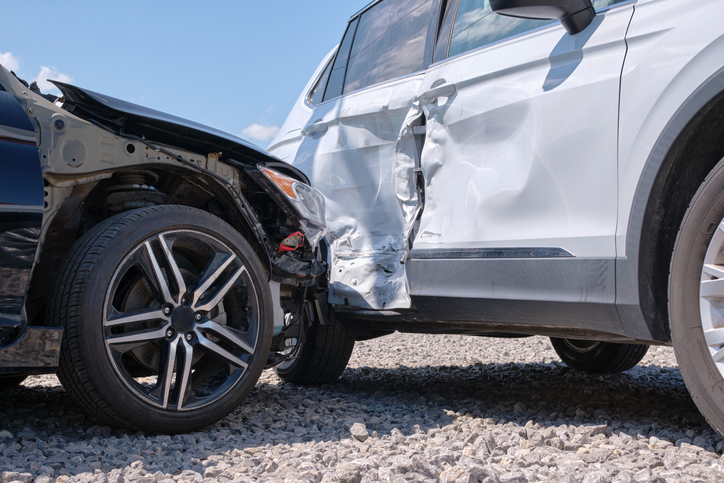Do you need a South Carolina Car Accident Lawyer?
Do you need a motor vehicle accident attorney? Why not hire an attorney who covers the entire state of South Carolina? How about hiring a lawyer who gets experts from across the country who are tops in their fields? If you or a loved one are the victim of a serious, possibly fatal car, bike or trucking accident you need a lawyer who will go the distance for you. A motor vehicle accident attorney who doesn’t mind getting specialists like an accident engineer to make sure you get the most value for your case.
One thing to be wary of – don’t agree to have the adjuster record your conversation. Remember, anything you say can be used against you, because, most importantly, the insurance company is not on your side. Speak with your car wreck lawyer FIRST!
My experience with this firm has been nothing short of unbelievable. Mr. Hood and Tracey, his paralegal are very professional and dependable. I would definitely use them again.
Valdena Lawrence, 2022/07/10
Our experience with The Law Offices of David Hood was extremely pleasant. Mr. Hood is very knowledgeable and helpful. Tracey Weiland was very helpful and patient with our special needs. They were there during a difficult process for us. Went out of their way to explain things and walk us through the legal process. Thanks so much. Highly recommend their practice.
Brenda Deamer, 2022/09/6
The thing that I love most about them is that they listened to me thoroughly and didn’t try to interrupt until I was finished. Everything was related to me in layman’s terms and they made sure to ask that if I had any questions about anything. The fact that David came down from Columbia just to speak with me in person spoke VOLUMES TO ME! Peter, Ali and everyone that had a hand in case were always very professional and I always knew what was going on with anything involving my case. They took my case when a prominent firm in my city stated that they couldn’t help me so I feel very BLESSED that I had them fighting for me. A GODSENT!
Mark McDomick, 2021/06/09
Table of Contents
- Common car accident injuries
- What should I do after a car accident?
- What causes most car accidents?
- Frequently asked questions
- How to find a motor vehicle accident attorney
- Blog posts related to motor vehicle accidents
Common Car Accident Injuries
Internal injuries
Car accidents can cause internal injuries that are serious and need immediate attention. If you think someone has an internal injury after a car accident, it’s important to get medical help right away. Don’t move the person unless it’s absolutely necessary, as this could make the injury worse.
Internal injuries can happen when there’s a sudden stop or a hard hit during a crash.
Types of Internal Injuries
- Bruises and Bleeding: Just like getting a bruise on your skin, your organs can also get bruised. Sometimes, this can cause bleeding inside your body, which is serious and needs quick medical attention.
- Broken Ribs: In a car accident, the force can break your ribs. Broken ribs can be painful and can also harm your lungs and other organs.
- Injuries to Organs: Your organs, like your liver, kidneys, and spleen, can get hurt in a crash. This can be dangerous because these organs have important jobs in your body.
- Internal Bleeding: This is when you bleed inside your body. It can happen in your organs, tissues, or even in your skull. This is a medical emergency and needs to be treated right away.
Signs of Internal Injuries
Sometimes, it’s hard to tell if someone has an internal injury. Here are some signs to look out for:
- Feeling dizzy or faint
- Trouble breathing
- Pain in the chest or abdomen
- Coughing up or vomiting blood
- Pale or clammy skin
- Fast heartbeat
Internal bleeding
When there’s a big impact, like in a car crash, it can cause the organs inside our body or the blood vessels to get damaged. This damage can lead to internal bleeding. Internal bleeding can be a serious result of a car accident, but knowing the signs and getting quick medical help can make a big difference.
What Are the Signs of Internal Bleeding?
It’s tricky because you can’t see internal bleeding like a cut on your skin. But there are some signs to look out for:
- Feeling dizzy or faint
- Having a really bad headache
- Feeling really tired
- Having a fast heartbeat
- Bruising on your skin, especially in the area where you got hurt
- Feeling sick to your stomach or throwing up
Mild concussions
Imagine you’re in a car, and suddenly, bam!, another car hits you. Your body might stop quickly because of the seatbelt, but your head might still move fast and then come to a sudden stop. This can cause your brain to move around in your skull, which can lead to a concussion.
Sometimes, you might hit your head on something like the steering wheel, dashboard, or window. Other times, the force of the crash alone can cause a concussion, even if your head doesn’t hit anything.
Mild concussion symptoms
If you’ve been in a car accident, it’s important to watch out for signs of a mild concussion. These can include:
- Feeling dizzy or lightheaded
- Having a headache
- Feeling confused or having trouble remembering things
- Being more tired than usual
- Feeling sick to your stomach
- Having trouble with balance or coordination
- Being more sensitive to light or noise
These symptoms might not show up right away. Sometimes they can take hours or even a few days to appear.
Spinal injuries
When a car accident happens, it can be pretty jarring for your body. Sometimes, the force from the crash can hurt your spine. This can lead to different types of spinal injuries, like:
- Whiplash: This happens when your head and neck snap back and forth really fast. It can strain the muscles and ligaments in your neck and might even hurt the bones in your spine.
- Fractures: This means that one or more of the bones in your spine get cracked or broken. Ouch!
- Herniated Discs: Your spine has these cushiony discs between the bones. If one of these gets pushed out of place, it can press on your nerves and cause a lot of pain.
- Spinal Cord Injury: This is one of the most serious injuries. If the spinal cord gets damaged, it can affect how your body moves and feels. In some cases, it might even lead to paralysis, which means you can’t move certain parts of your body.
Whiplash
Whiplash is a neck injury that happens when your head moves back and forth very quickly. It’s common in car accidents, especially if you get hit from behind. Imagine your head is a ball on a spring. If your car gets hit, your head can snap forward and then back, just like the ball would. This can stretch and tear the muscles and ligaments in your neck.
After a car accident, you might not feel whiplash right away. It can take a few days for symptoms to show up. This is why it’s important to go to the hospital right away after a car accident.
Here are some things you might feel if you have whiplash:
- Neck pain and stiffness
- Headaches, usually at the base of your skull
- Dizziness
- Blurry vision
- Feeling tired
Sometimes, you might also have trouble concentrating or remembering things, or you might feel irritable or have trouble sleeping.
What should I do after a car accident?
Check for injuries
If anyone in your vehicle, or other vehicles involved in the accident has suffered an injury, call 911 immediately.
Call the police
Once you’re sure there are no injuries, call the non-emergency line of the police department. While you are waiting for the police to get there, do not touch anything or remove anything from the crash site. Stay were you are until the police arrive.
Take notes and get information from the driver who hit you
Gather and document information of the collision. Take pictures with your cell phone, if and only if, it’s safe to do so.
What information to exchange: full name, license plate number, insurance information, and contact details of the other driver. Talk to eye witnesses to see if you can get their contact information if the need arises for you to contact them. Also take pictures of any bodily injuries you may have.
Notify your insurance company
If you have any injuries, or your car has any damage, call your auto insurance representative, and inform them of the accident. They will need specific information about the accident. If you receive a call from the other driver’s insurance company, avoid talking to them until you ca talk to an attorney.
Call motor vehicle accident Attorney David L. Hood
You need a good motor vehicle accident attorney on your side to deal with the insurers, medical claims, etc. Remain calm and wait for your attorney to give you advice on the best way to handle your case.
What causes most car accidents?
1. Distracted Driving
One of the biggest reasons for car accidents is distracted driving. For example, texting or eating while driving. When drivers aren’t paying attention to the road, they can easily crash into other cars or objects.
2. Speeding
Going too fast is another major cause of car accidents. When drivers speed, they have less time to react to what’s happening on the road. This can lead to serious accidents, especially if they need to stop quickly.
3. Drunk Driving
Alcohol can make it hard for drivers to focus and make good decisions. This can lead to accidents that could have been avoided if the driver had been sober.
4. Bad Weather
Rain, snow, and fog can make the roads slippery and hard to see. Drivers need to be extra careful in bad weather to avoid accidents.
5. Running Red Lights
When drivers ignore traffic signals, like running red lights, it’s obvious to see how an accident can happen.
6. Teenage Drivers
Teenage drivers are more likely to get into accidents because they have less experience. They might not know how to handle certain situations on the road, which can lead to mistakes.
7. Tire Blowouts
If a car’s tire suddenly pops, it can cause the driver to lose control. This can lead to an accident, especially if it happens at high speeds.
8. Poor Road Conditions
Sometimes, the roads themselves can be the problem. Potholes, broken traffic lights, and unclear road signs can lead to accidents.
Frequently Asked Questions:
How long does it take to settle a car accident case?
It depends on how severe your injuries are. If they’re minor, you might want to handle it yourself. If it’s more serious and you’re going to need surgery, rehab & physical therapy, you want to make sure you’ve reached “maximum medical improvement” and been released by your medical providers. Because once you’ve settled your case, typically that’s it. So settling your car accident case could be quick, (within a month or two), or take a year or more if you’re seriously injured.
What happens if you don't have auto insurance?
There are a few possible penalties for a first offense driving uninsured conviction in South Carolina. They are:
- An uninsured driving fee of $600 if you don’t get some auto insurance back in force,
- Up to a $200 fine or 30 days in jail or both,
- $5 per day for each day you went without insurance.
It may not be easy, but it’s important to get some auto insurance back in place as soon as possible. Also, get straight with t
How can a traffic accident lawyer help you?
Your traffic accident lawyer should be able to act as “the wall” between you, the insurance company, adjuster and defense lawyer. They should focus on all your insurance and legal issues so you can focus on getting well. Your traffic accident attorney will hopefully also be skilled at maximizing your settlement value and getting medical bill and health care lien reductions for you. Finally, your traffic accident lawyer should be ready to file a lawsuit for you if the insurance company isn’t treating you fairly.
How to find a motor vehicle accident attorney
If you or a loved one has suffered injuries in a car accident, look no further than The Law Offices of David L. Hood, your motor vehicle accident attorney. We have served South Carolina accident victims for over 30 years by standing up to insurance companies, demanding fair compensation, and helping our clients rebuild their lives. Contact us online or call us at (843) 491-6025 to schedule your free, no-risk initial consultation with David L. Hood today.
At The Law Offices of David L. Hood, we put our clients first. If you need help, we’d be happy to listen and answer your questions. And there’s never a fee for an initial consultation.
Blog posts related to motor vehicle accidents:
Second-Hand Drinking Effects
States with Worst Drivers – South Carolina #10
Rear End Accident in South Carolina? Steps to Take
Injured by a Drunk Driver?
Insurance Company Bluff





